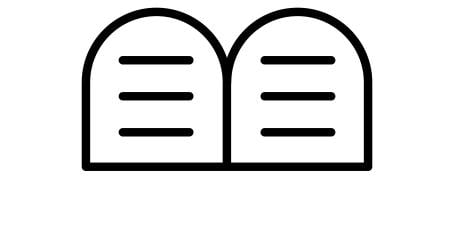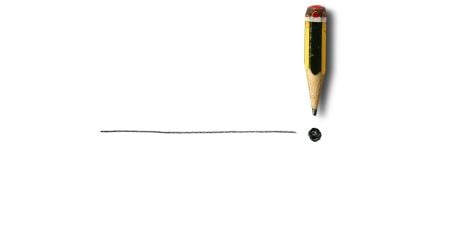The field of medicine has seen significant advances in the ability to support or replace native organ function over the last several decades. Renal hemodialysis, in existence since the 1940s [1], has become standard treatment for patients suffering from end-stage kidney disease and is often used in the outpatient setting as a bridge to transplantation or as a destination therapy, where it permanently replaces organ function [2]. Likewise, continuous venovenous hemodialysis (CVVHD) may be used in the critical care setting for potentially reversible kidney injury, among other indications [3]. Ventricular assist devices (VADs) may partially or completely replace cardiac function; a total artificial heart (TAH) completely replaces it [4], and either one may be used as a bridge to heart transplantation or a destination therapy [5, 6]. Liver replacement alternatives, which include the extracorporeal liver assist device (ELAD) and the molecular adsorbent recirculating system (MARS), replaces the detoxification function of a failing liver [7].
Extracorporeal membrane oxygenation (ECMO) uses a pump to withdraw deoxygenated blood from a central vein, provide oxygen and remove carbon dioxide via diffusion across a semipermeable membrane, and return oxygenated blood into a central vein or artery, essentially functioning as an external artificial lung, heart, or both [8]. In cases of respiratory failure, ECMO is being used with increased frequency as a supplement to, or occasionally in place of, invasive mechanical ventilation [9-12]. While this technology has the ability to replace a patient’s native lung function, its use, like use of liver replacement therapies and CVVHD, requires ongoing attention in an intensive care unit (ICU). ECMO can serve as a bridge to recovery from reversible illnesses or as a bridge to transplantation for select patients, but not currently as a destination therapy.
As organ replacement technologies become increasingly sophisticated and more readily available, we will have the ability to prolong organ function for longer, which raises significant questions about their appropriate use.
Appropriate Use of Organ-Replacement Interventions in Individual Cases
The fact that we have the ability to sustain organ function does not mean that it is always medically or ethically appropriate to do so. It is reasonable to base assessment of the medical appropriateness of a technology on the likelihood of its achieving reasonable goals. In the case of these sophisticated organ-replacement technologies, reasonable goals are not only replacing the failing organ but also bridging the patient to recovery, transplantation, or destination therapy. It would be inappropriate to use these technologies only to prolong the dying process in critically ill ICU patients with low quality of life and no chance of achieving any of the abovementioned goals. Although the lives of patients with end-stage pulmonary disease with no hope for transplant or recovery might be extended by days or even weeks using, for example, ECMO, it would be hard to justify employing such resource-intensive technology, especially when ICU beds and often the machines themselves are in limited supply.
What should be the approach in such a case when the patient or surrogate insists on using the technology? Is it medically or ethically appropriate to refuse a request for a potentially life-prolonging intervention when the chance of the patient’s surviving to leave the hospital is remote or nonexistent and the intervention itself may cause physical and emotional suffering? What should be done, then, when a sentient patient with multi-organ failure and minimal to no chance of survival to discharge from the hospital requests organ-replacement therapy in order to have more time with his or her family? And does that case differ significantly from one in which a surrogate, acting on behalf of a moribund patient without capacity, requests life-prolonging therapies that will only prolong the dying process?
Patient autonomy is a fundamental principle of contemporary Western medical ethics, but it is not absolute. For instance, a patient dying in an ICU with cardiogenic shock and irreversible multi-organ failure whose surrogate requests an aortic balloon pump does not have the absolute right to such technology, although it might prolong the patient’s life. Such an intervention would unquestionably be deemed medically inappropriate. There seems to be a general, if unofficial, consensus among most intensivists that surrogate requests for intubation, vasopressors, and antibiotics be granted even when patients are irreversibly ill and will not survive to discharge. A line is drawn, however, at more sophisticated and resource-intensive technologies such as ECMO and surgical procedures because the burden for the patient and the use of resources is far in excess of any therapeutic benefit gained. Hospital policies and physicians differ with regard to renal replacement therapy in irreversibly ill patients. Some physicians will agree to CVVHD for such patients, while others will refuse.
In our opinion, whether or not organ-replacement therapy should be employed rests on how likely it is to bridge a patient to recovery or successful destination therapy [13]. If these goals cannot be met we would withhold such therapy, not only because these goals are unattainable but also because the patient would likely be harmed by its administration. In circumstances in which a patient who has no hope for recovery or destination therapy requests organ-replacement therapy to prolong life long enough to spend time with family or prepare for the end of his or her life, the decision to offer such therapy depends on the type of intervention needed. Invasive mechanical ventilation has generally been accepted for these purposes, but use of more sophisticated therapies such as ECMO and VADs is rarely considered justified in these circumstances because of their significant potential for harm to the patient and high resource burden.
More broadly, does the clinician have an ethical obligation to offer, or even disclose, all potential therapies, including those that would merely prolong the dying process? Although we feel that families need to be apprised of the fact that their loved ones are experiencing organ failure, we do not feel a concomitant ethical obligation to offer an intervention that we feel is not medically indicated because it will not be of any therapeutic benefit.
Larger Social Questions
As noted above, it is our impression that, many, if not most, intensivists currently find it difficult to refuse to grant patients’ or their surrogates’ requests for invasive mechanical ventilation, CVVHD, vasopressors, potent antibiotics, and other expensive and resource-intensive life-sustaining interventions even when the likelihood of the patient’s surviving to discharge is remote to nonexistent. In fact, in our state of New York, the law mandates resuscitation of every patient unless the patient or surrogate elects a do-not-resuscitate (DNR) order [14]. Absent a DNR, state law, or court decision, “full resuscitation” is the default treatment for all patients [15]. On the other hand, we know of no legal precedent to support the idea that physicians must perform surgical interventions against their medical judgment because the patients or their surrogates demand it.
Will changing risk-benefit calculations influence ideas about appropriate use of organ-replacement therapies? Smaller circuit components and lower levels of anticoagulation needed to maintain function have reduced the complication rates of ECMO, improving its risk-to-benefit ratio [16]. As technology improves and devices like VADs and ECMO become simpler to deploy, will ethical and even legal determinations about their appropriate use change? Will ECMO ever become a standard accompaniment of cardiopulmonary resuscitation so that patients who decline a DNR order will thereby mandate the use of ECMO? We can and do keep dying patients alive for weeks or months in accordance with the wishes of their relatives with ventilators, CVVHD, vasopressors, and antibiotics. Will ECMO join this list of interventions as it becomes easier and less resource-intensive to employ, or will physicians continue to refuse this intervention?
And what will the role of concerns about health care costs be in determining when to use organ-replacement therapies? As the tidal wave of baby boomers reaches old age in the coming decades, it is likely that that the competition for ICU beds will intensify, the cost of increasingly sophisticated technology will rise, and pressures to contain costs will increase. Will our society make collective determinations about when organ-replacement interventions should be used and when they should not [17]? The process of evaluating these technologies requires, in part, a societal judgment about whether the allocation of the associated financial and physical resources is acceptable. Society may decide that such resources should only be used when rigorously designed clinical trials demonstrate particular benefits or that the benefits involved are worth a very high cost. Cost-benefit analyses, which are crucial to such policy decisions, should be undertaken for all of the newer life-sustaining technologies to inform such judgments [18, 19].
Conclusion
Criteria for appropriately initiating organ-replacement therapy to benefit patients, and, of equal importance, criteria for stopping these sophisticated treatments when therapeutic goals can no longer be met are currently not well defined. For resource-intensive therapies to be offered to those who are most likely to benefit well-designed studies with a focus on clinically meaningful, patient-centered outcomes are of the utmost importance. When data on efficacy is lacking, the decision about whether to use such technology becomes more difficult. Furthermore, although there are laws that give patients the right to refuse or discontinue life-sustaining treatments, there is no societal consensus about who should have the last word when patients or their families and physicians disagree about the appropriateness of using sophisticated medical technology in situations where such treatment clearly serves only to prolong the dying process [20, 21].
Up to now, patients and families in the U.S. have been given considerable leeway in having requests for such technology granted, even against medical advice. Our society has been generous in this regard out of respect for family values, religious beliefs, and hope. Whether in the coming years, with an increase in elderly patients requiring ever more sophisticated and expensive medical technology, this liberal policy of following patient and family wishes is sustainable remains to be seen. At the very least, the medical community should begin to formulate guidelines that delineate the appropriate use of organ-replacement therapies, taking into consideration the resources involved and the clinical expectation of success.
References
- Parsons FM. Origins of haemodialysis in the United Kingdom. BMJ. 1989;299(6715):1557-1560.
- Goldstein SL. Advances in renal replacement therapy as a bridge to renal transplantation. Pediatr Transplant. 2007;11(5):463-470.
- Tolwani A. Continuous renal-replacement therapy for acute kidney injury. N Engl J Med. 2012;367(26):2505-2514.
- Copeland JG, Smith RG, Arabia FA, et al. Cardiac replacement with a total artificial heart as a bridge to transplantation. N Engl J Med. 2004;351(9):859-867.
- Hunt SA, Abraham WT, Chin MH, et al. ACC/AHA 2005 guideline update for the diagnosis and management of chronic heart failure in the adult: a report of the American College of Cardiology/American Heart Association Task Force on Practice Guidelines (Writing Committee to Update the 2001 Guidelines for the Evaluation and Management of Heart Failure): developed in collaboration with the American College of Chest Physicians and the International Society for Heart and Lung Transplantation: endorsed by the Heart Rhythm Society. Circulation. 2005;112(12):e154-235.
- Samuels LE, Dowling R. Total artificial heart: destination therapy. Cardiol Clin. 2003;21(1):115-118.
- Pless G, Sauer IM. Bioartificial liver: current status. Transplant Proc. 2005;37(9):3893-3895.
-
Brodie D, Bacchetta M. Extracorporeal membrane oxygenation for ARDS in adults. N Engl J Med. 2011;365:1905-1914.
-
Paden ML, Conrad SA, Rycus PT, Thiagarajan RR; ELSO Registry. Extracorporeal Life Support Organization registry report 2012. ASAIO J. 2013;59(3):202-210.
- Abrams D, Brenner K, Burkart KM, et al. Pilot study of extracorporeal carbon dioxide removal to facilitate extubation and ambulation in exacerbations of chronic obstructive pulmonary disease. Ann Am Thorac Soc. 2013;10(4):307-314.
- Abrams D, Brodie D, Bacchetta M, Burkart K, Agerstrand C, Berman-Rosenzweig E. Upper-body extracorporeal membrane oxygenation as a strategy in decompensated pulmonary arterial hypertension. Pulm Circ. 2013;3(2):432-435.
- Abrams D, Brodie D. Emerging indications for extracorporeal membrane oxygenation in adults with respiratory failure. Ann Am Thorac Soc. 2013;10(4):371-377.
-
Rinehart A. Beyond the futility argument: the fair process approach and time-limited trials for managing dialysis conflict. Clin J Am Soc Nephrol. 2013; July 18 [ePub ahead of print].
- Lederberg MS. Doctors in limbo: the United States ‘DNR’ debate. Psycho-oncology. 1997;6(4):321-328.
- Blinderman CD, Krakauer EL, Solomon MZ. Time to revise the approach to determining cardiopulmonary resuscitation status. JAMA. 2012;307(9):917-918.
- Combes A, Bacchetta M, Brodie D, Muller T, Pellegrino V. Extracorporeal membrane oxygenation for respiratory failure in adults. Curr Opin Crit Care. 2012;18(1):99-104.
-
Callahan D, Prager K. Medical care for the elderly: should limits be set? Virtual Mentor. 2008;10(6):404-410.
-
Parikh A, Shaw A. The economics of renal failure and kidney disease in critically ill patients. Crit Care Clin. 2012;28(1):99-111, vii.
- Peek GJ, Mugford M, Tiruvoipati R, et al. Efficacy and economic assessment of conventional ventilatory support versus extracorporeal membrane oxygenation for severe adult respiratory failure (CESAR): a multicentre randomised controlled trial. Lancet. 2009;374(9698):1351-1363.
-
Cruzan v Director, Missouri Department of Health. 110 West’s SCt Rptr 2841-2892 (1990).
-
In the Matter of Karen Quinlan. 355 Atl Rptr 647-6 (NJ 1976).



